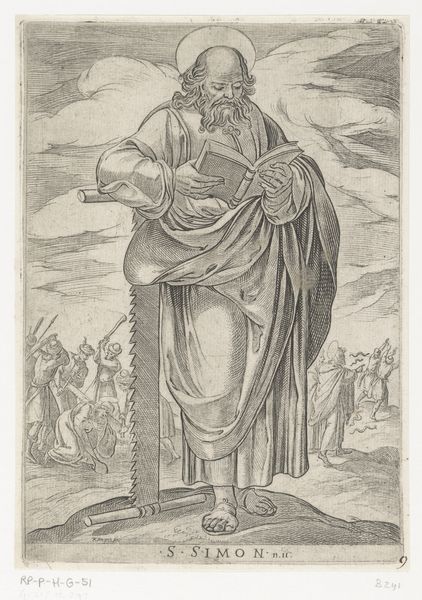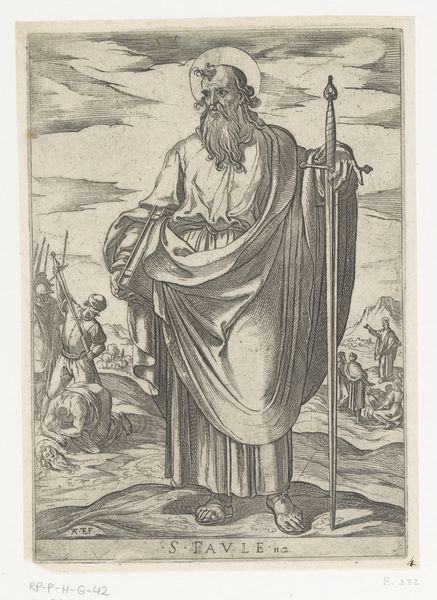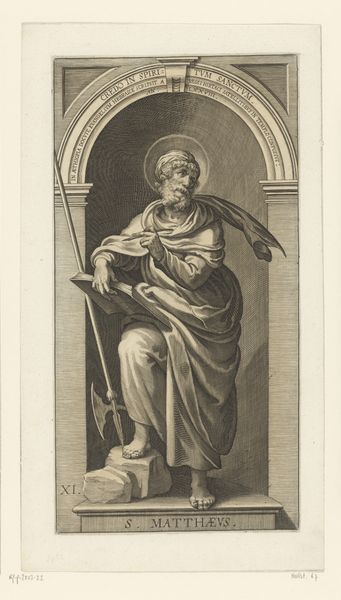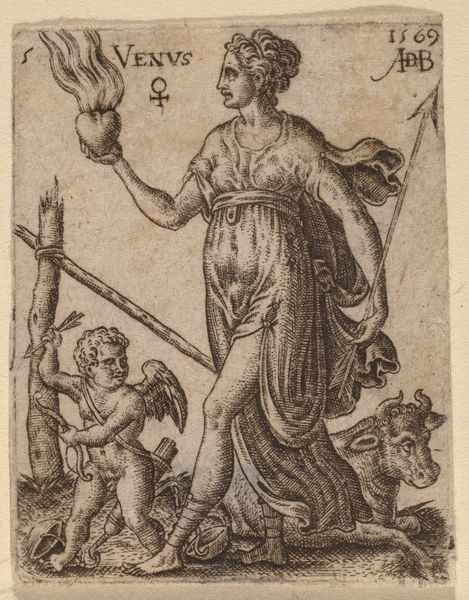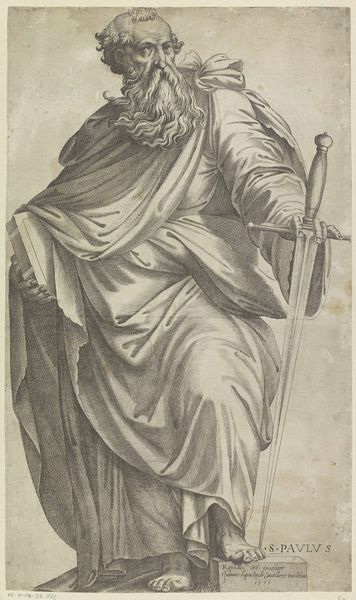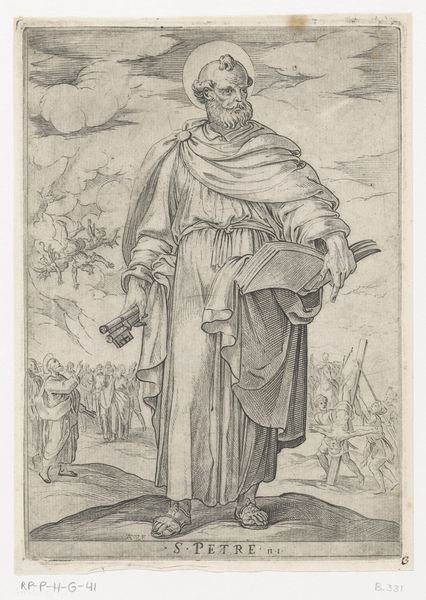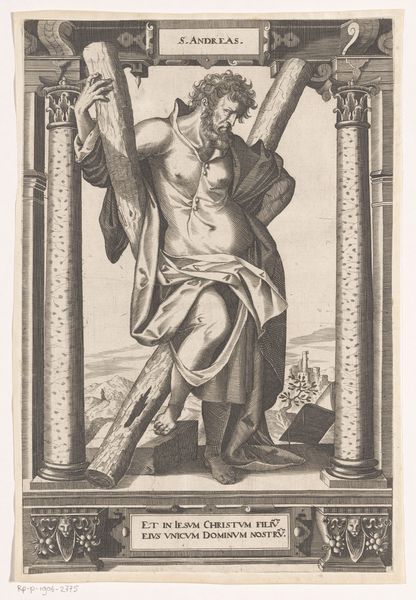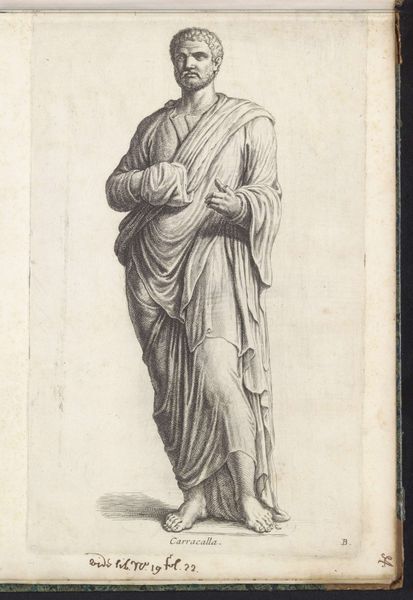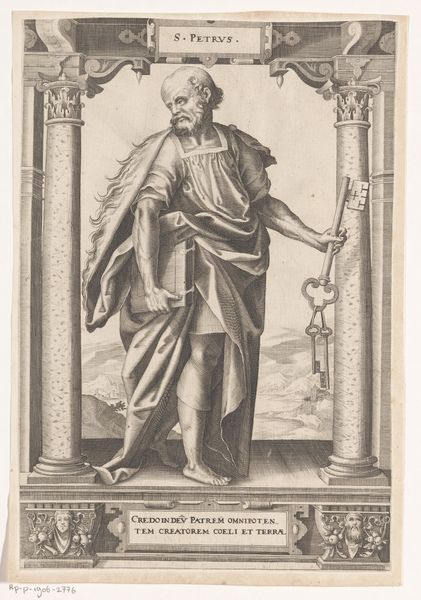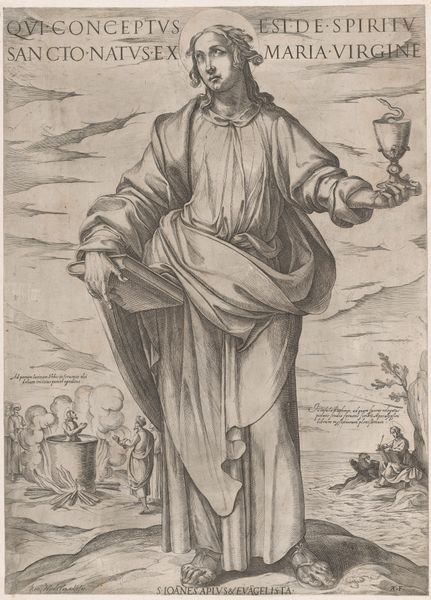
print, engraving
#
portrait
#
allegory
# print
#
old engraving style
#
landscape
#
mannerism
#
history-painting
#
engraving
Dimensions: height 213 mm, width 144 mm
Copyright: Rijks Museum: Open Domain
Curator: Welcome. Here we have "Maria Magdalena," an engraving dating from about 1530 to 1560 by the artist known as Meester van de Dobbelsteen. It’s part of the Rijksmuseum collection. Editor: The first thing that hits me is the figure's almost mournful stance, juxtaposed against this incredibly elaborate goblet she holds. It’s a striking contrast. Curator: Absolutely. The piece blends a few genres popular at the time—portraiture, religious allegory, and even hints of landscape art. Engravings like this circulated widely, influencing visual culture. Representations of Mary Magdalene served a didactic role. Editor: I can see that. But the execution…it feels more like an idealized goddess than the weeping repentant. Look at the hair cascading down her back. And is she really walking barefoot across such varied terrain? I'm amused by the 'B' that’s been so delicately placed. Is that the artist’s signature, a quirky stamp, or a mysterious clue? Curator: Well, the figure, even with that elaborate draping and idealized look, points to a debate of female figures and the construction of a powerful and at the same time humble presence, while the letter probably relates to a watermark, signature, or indications for future work that now, obviously, can't be read. Think of prints as reproducible assets—images carried a lot of cultural weight! It will affect those to come because the possibility of having these kinds of assets around had a large effect on representation and dissemination. Editor: True. I think there’s more at play than just solemn reverence. See the tiny castles? Maybe it speaks to how the divine intersects with everyday lives, not just ethereal existence? Plus the rendering, this is almost cartoonish, like early art books! Curator: The "history painting" aspect that emerges out of Mary Magdalene makes one think about the way artists worked and negotiated through style: here Mannerism in its more accessible expression, combined with the use of engraving, gave artists and workshops more possibilities of representation than before, something to consider since they became more relevant in a society eager for self-imaging and glorification. Editor: Agreed, now I see that a little humour definitely comes into play when considering the society of the time. Thanks! Curator: My pleasure!
Comments
No comments
Be the first to comment and join the conversation on the ultimate creative platform.

